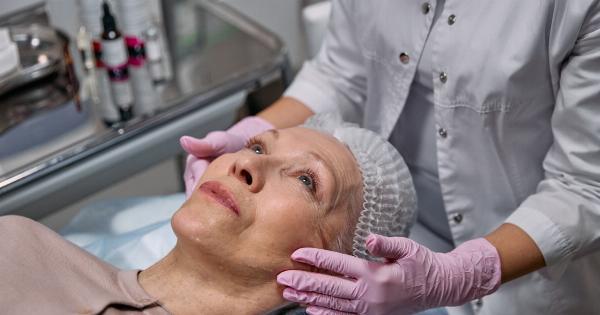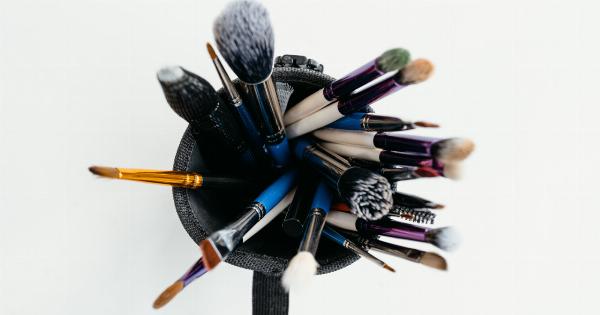As we age, our skin undergoes various changes, including the loss of volume. Volume loss can result in a hollowed or sagging appearance, making us look older than we actually are.
However, with advancements in skincare and cosmetic procedures, there are several effective treatments available to address volume loss in mature skin. In this ultimate guide, we will explore these treatments and provide valuable insights to help you achieve rejuvenated and youthful-looking skin.
Understanding Volume Loss in Mature Skin
Before delving into the treatments, it is crucial to understand what causes volume loss in mature skin. As we age, our skin produces less collagen and elastin, two essential proteins responsible for maintaining firmness, elasticity, and volume.
Additionally, the fat pads beneath our skin diminish over time, resulting in a loss of facial fullness. Combined, these factors contribute to volume loss, leading to a tired and aged appearance.
1. Dermal Fillers
Dermal fillers are a popular choice for treating volume loss in mature skin. These injectable gels contain substances like hyaluronic acid, which can replenish lost volume and restore fullness.
The treatment can be tailored to target specific areas, such as the cheeks, nasolabial folds, or under-eye hollows. Dermal fillers are minimally invasive, and the results are immediate, making them a convenient option for those seeking immediate rejuvenation.
2. Fat Transfer
Another effective treatment for volume loss is fat transfer, also known as fat grafting or autologous fat transplantation.
This procedure involves harvesting fat from one part of the body, such as the abdomen or thighs, and injecting it into the desired areas of the face. Fat transfer not only restores volume but also improves the overall texture and quality of the skin. It is a more permanent solution compared to dermal fillers, as the transferred fat cells integrate and become a part of the recipient site.
3. Sculptra
Sculptra is a unique injectable treatment that stimulates collagen production in the skin. It contains poly-L-lactic acid, which gradually restores lost volume and improves skin thickness.
Sculptra is particularly effective for treating deep facial lines, wrinkles, and folds. While the results may take a few weeks to become noticeable, they are long-lasting and can provide a natural-looking enhancement.
4. Thread Lift
A thread lift is a non-surgical procedure that lifts and tightens the skin, effectively addressing volume loss. It involves inserting dissolvable threads into the skin, which create a lifting effect.
These threads also stimulate collagen production, promoting firmer and more volumized skin. Thread lifts are suitable for various areas of the face, including the cheeks, jowls, and neck.
5. Laser Resurfacing
Laser resurfacing is a popular treatment for multiple skin concerns, including volume loss. This procedure uses laser technology to stimulate collagen production and improve skin texture.
It can also help reduce the appearance of wrinkles, fine lines, and age spots. Laser resurfacing can be adjusted to different penetration depths, making it suitable for various skin types and concerns.
6. Microneedling
Microneedling is a minimally invasive treatment that uses tiny needles to create micro-injuries in the skin. These controlled injuries stimulate collagen and elastin production, promoting the restoration of volume.
Microneedling treatments can be combined with serums or platelet-rich plasma (PRP) injections to further enhance the rejuvenation process. This treatment is effective in addressing volume loss, fine lines, and overall skin texture.
7. Face Massage and Facial Exercises
Incorporating face massage and facial exercises into your skincare routine can help maintain and potentially restore volume in mature skin.
Regular massaging techniques increase blood circulation, stimulate collagen production, and promote lymphatic drainage, all of which contribute to improved skin texture and volume. Additionally, specific facial exercises targeting the cheeks, jawline, and forehead can help strengthen the underlying muscles and provide a natural lifting effect.
8. Skincare Products with Active Ingredients
Choosing skincare products with active ingredients can help address volume loss in mature skin. Look for products that contain ingredients like retinol, peptides, growth factors, and hyaluronic acid.
Retinol stimulates collagen production, peptides promote skin firmness, and growth factors contribute to improved skin quality. Hyaluronic acid, known for its ability to retain moisture, can also help plump the skin and restore lost volume.
9. Healthy Lifestyle Habits
Achieving and maintaining volume in mature skin goes beyond skincare and cosmetic treatments. Adopting healthy lifestyle habits can significantly contribute to the overall health and appearance of your skin.
Ensure you have a balanced diet rich in antioxidants, vitamins, and minerals, as these nourish your skin from within. Stay hydrated, protect your skin from sun damage with SPF, and avoid smoking and excessive alcohol consumption, as these factors can accelerate volume loss and premature aging.
10. Consultation with a Skincare Professional
While this guide provides valuable insights, it is essential to consult with a skincare professional for personalized advice and treatment recommendations.
A qualified dermatologist or aesthetician can assess your specific concerns, skin type, and medical history to develop a comprehensive treatment plan tailored to your needs. They can recommend the most suitable treatments, products, and lifestyle adjustments to address volume loss and promote youthful-looking skin.































